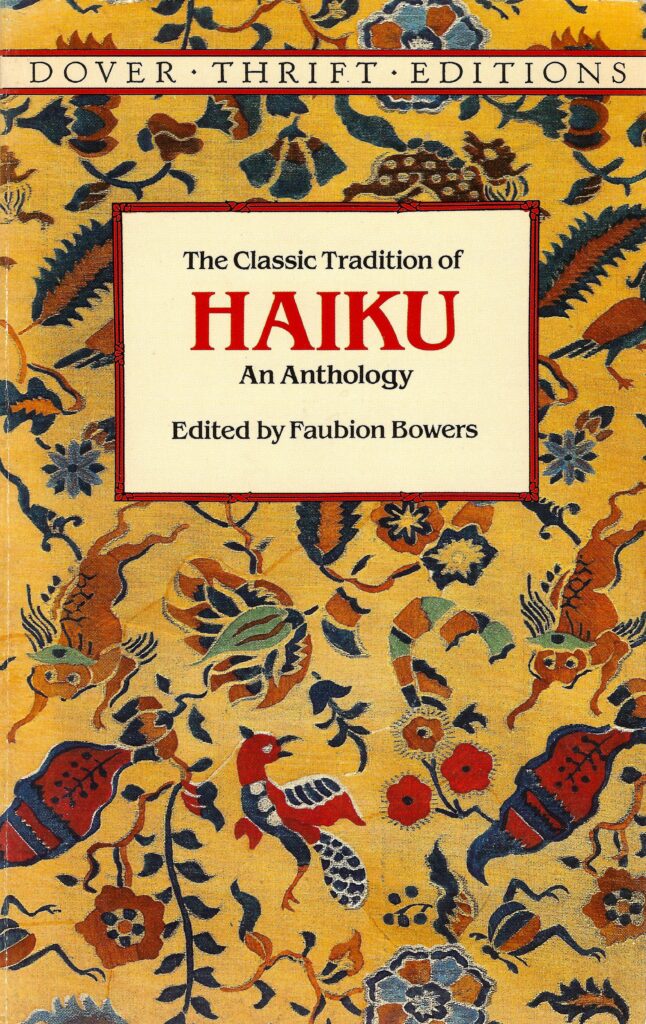Recently Yael asked me to share some favorite haiku writers, which I happily sent along, along with Yoel Hoffman’s book, Japanese Death Poems. I received the following response.
10/24/21
What a delight. Three big envelops all at once, with so much inside! It’s like literary Christmas or something. It may take me a moment or five to read, reflect on, and address all the wealth stored in those envelopes, but I would like to say thank you to your student who wrote the micro memory in the elevator…Please thank her for me. You obviously knew that I would get it. The ancestors following us around, present in every interaction – that is not a metaphor. It is the truth.
But I’m so eager to tell you about Haiku, (or Haikus – if you want to follow Jack Kerouac’s version.)
Ok, so…writing a Haiku was an assignment from my therapist, to which I immediately responded with a willful, “No – I don’t do strict structure,” to which she replied, “just write the shortest possible thing you could write.” I reluctantly accepted the homework. Little did I know earlier that day, when the words the art of paying attention crossed my mind during meditation, that the practice of Haiku writing was directly related and even more so – a gate to – the art of paying attention.
I thought that “the art of paying attention” could be an excellent name for a self-help book that was probably taken already. A quick google search later, finding no book under this name, I was led to a random blog that talked about “the art of paying attention” in the context of Haiku writing. Ok, now I was in an internet rabbit hole that led me to the Beatnik generation that did away with the 5-7-5 rule, and this quote from Jack Kerouac:
“Above all, a Haiku must be very simple and free of all poetic trickery and make a little picture and yet be as airy and graceful as a Vivaldi Pastorella.”
I was now free. A few minutes later I was listening to Vivaldi’s La-Pastorella and writing my first shitty haiku:
Three airy lines
Fingers on a keyboard
The longest moment
Praised be the internet, two days later I had in my possession four new books:
- Jack’s Book of Haikus – with plenty of examples about how to break the rules of Haiku and of Haikus as well.
- The Classic Tradition of Haiku, An Anthology – a great little collection of the Japanese classics, with transliteration, some comparative translations, and foot notes for every Haiku. Great introduction for beginners
- Haiku, The Last Poems of an American Icon – by Richard Wright – an example of Western Haiku that stick to the rules, AND the perspective of a Black American writing in the era of cold war. Fascinating introduction from the author’s daughter.
Aaaaannnddd…Drumroll please…
- Three Simple Lines: A Writer’s Pilgrimage into the Heart and Homeland of Haiku – by Natalie Goldberg – your Natalie. (This also led me back to re-reading the Bones. How little attention did I pay in class! I did not deserve that A.)
Goldberg was first introduced to Haiku by Allen Ginsberg. She recalls the writing class she took with him in Naropa Institute in Boulder Colorado, 1976:
“He also told us that the formal five syllables, then seven, then five, often taught in Western schools, does not necessarily work in English. In Japanese each syllable counts. They don’t have the, an that, those articles of speech, so he encouraged us not to worry about the count if we write or translate haiku. Only make sure the three lines make the mind leap.
‘The only real measure of a haiku,’ Allen told us that one hot July afternoon, ‘is upon hearing one, your mind experiences a small sensation of space’ – he paused; I leaned in, breathless – ‘which is nothing less than God.’”
Quick detour – Speaking of Boulder, CO – I drove through it at the beginning of this month – and here is the impression it left on me:
Boulder Colorado:
Squeaky clean superior construction
Two homeless people by a bridge
(I just changed the last line from “with a side of homelessness by a bridge”. It takes longer than you would think to write three lines, even without the 5-7-5 structure. I’m still not satisfied with it at all, but it is getting closer.)
You mentioned that someone gave you a book about Japanese Death poems. I find the Haikus that were written on deathbeds, or for the dead – to be the most poetic, tender, and pointiest.
Examples:
Basho’s death poem, cannot be translated accurately. Natalie talks about it in her book, but I think even without accurate translation of the word that is translated as desolate, there is something breath-taking about this.
sick on my journey
only my dreams wander
these desolate moors
Chiyo-ni, a female Haiku Master (if it wasn’t for Nathalie, I wouldn’t know that female Haiku masters were a thing):
Clear water is cool
fireflies vanish –
there’s nothing more
Bosun’s death poem (chills all over):
the night almost past
through the white plum blossoms
a glimpse of dawn
Natalie Goldberg wrote these two for Allen Ginsberg, after his passing
Allen Ginsberg
far beyond
Seventeen syllables
Spring wind
Blossomed you
Into another world
Towards the end of her book, Nathalie untangles herself from Allen’s way and finds her own way with Haiku. It only took her about half a century to figure out how to do that. (Teachers. You can’t live with them, and it sure sucks without them.)
